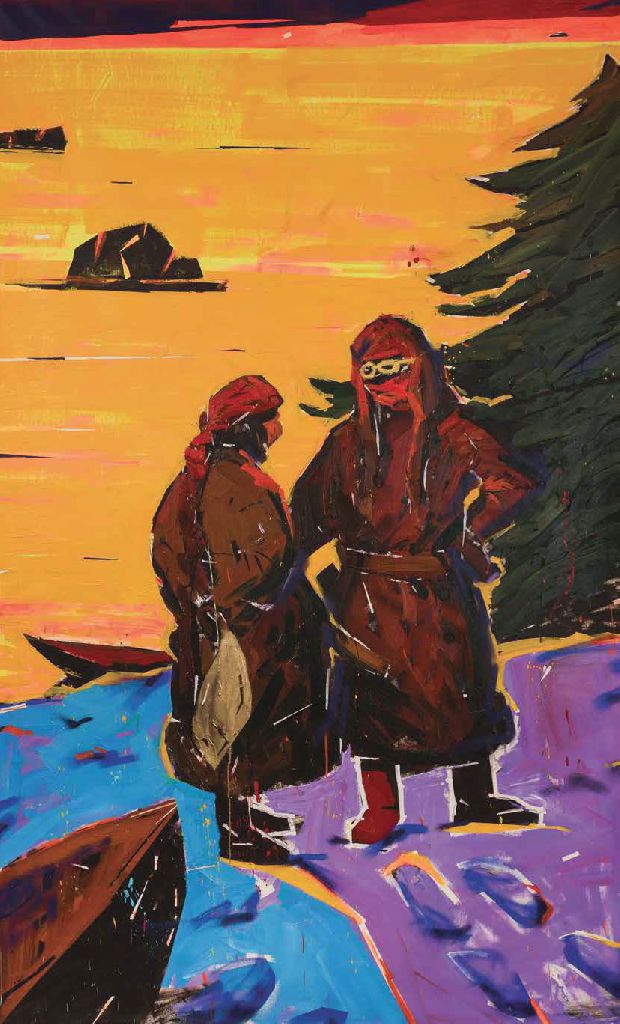 Siberians. 2019, acrylic and oil colors on raw canvas, 275x167 cm
Siberians. 2019, acrylic and oil colors on raw canvas, 275x167 cm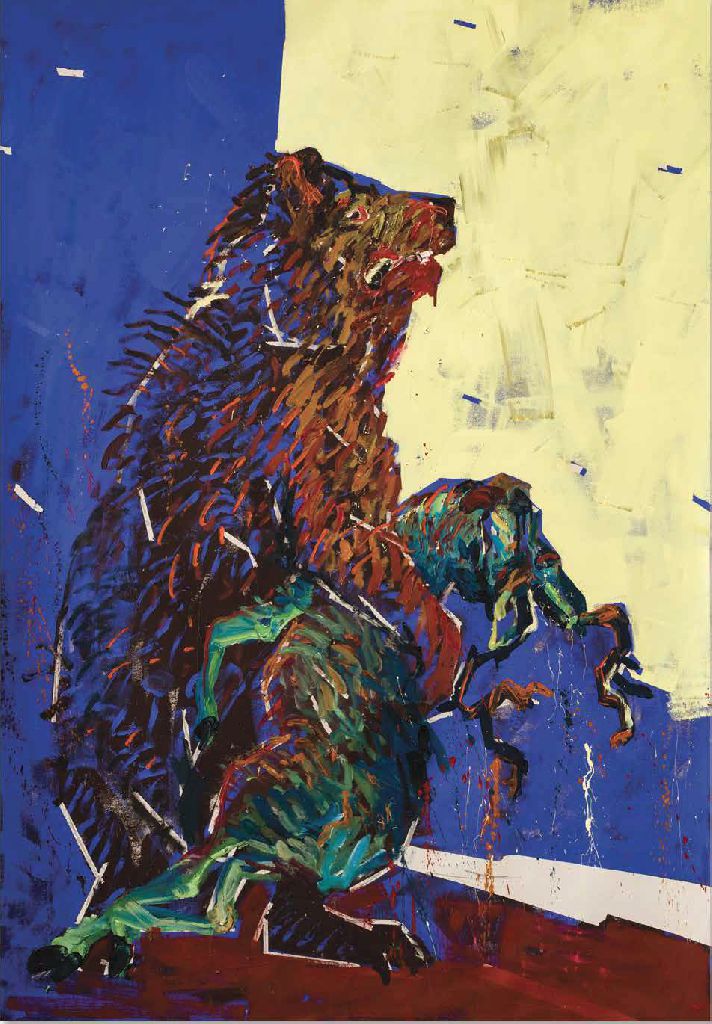 Ursus bear. 2017, acrylic and oil colors on raw canvas, 210x166 cm
Ursus bear. 2017, acrylic and oil colors on raw canvas, 210x166 cm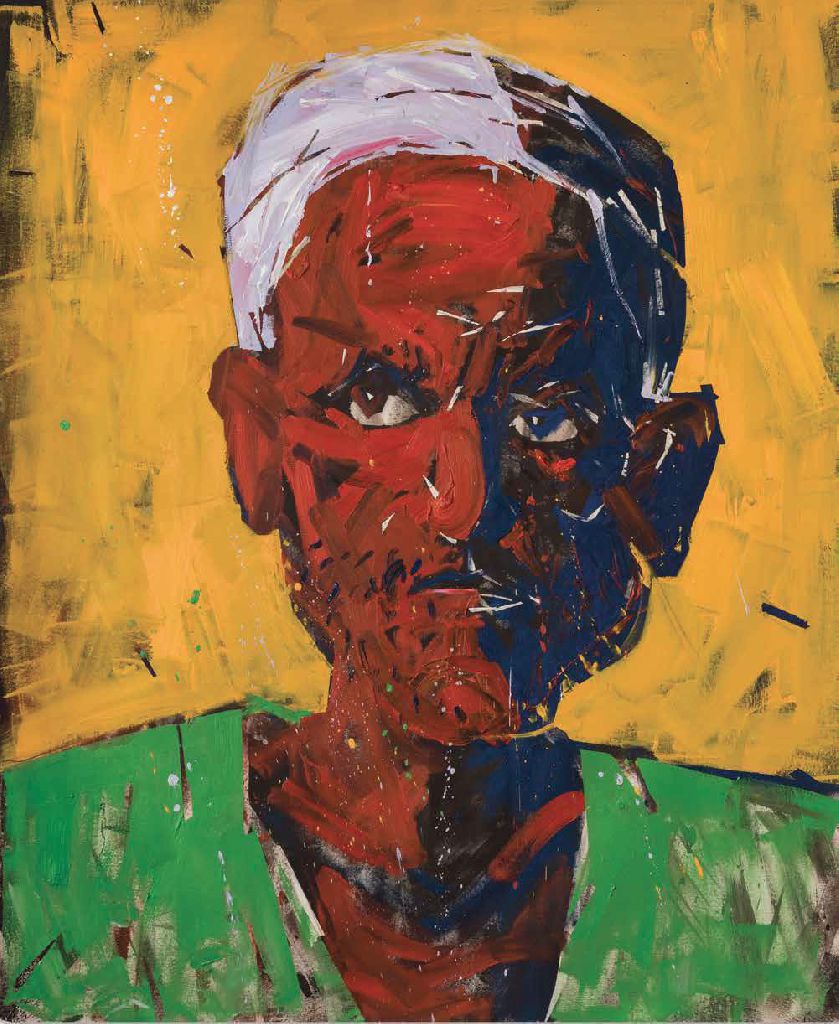 My hungry brother. 2017, acrylic and oil colors on raw canvas, 210x166 cm
My hungry brother. 2017, acrylic and oil colors on raw canvas, 210x166 cm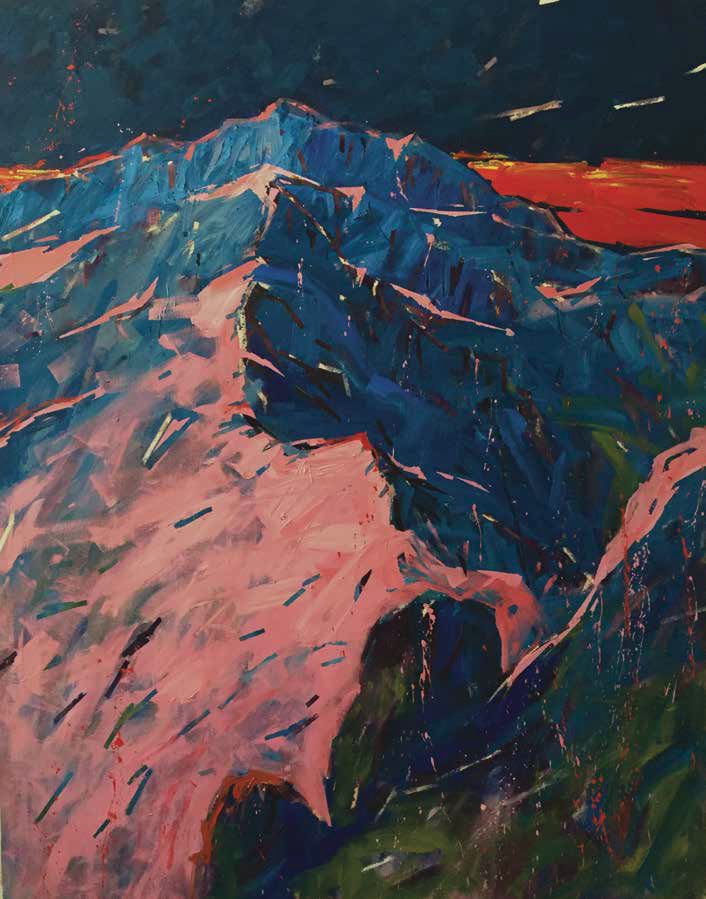 Red mountains. 2017, acrylic and oil colors on raw canvas, 210x166 cm
Red mountains. 2017, acrylic and oil colors on raw canvas, 210x166 cm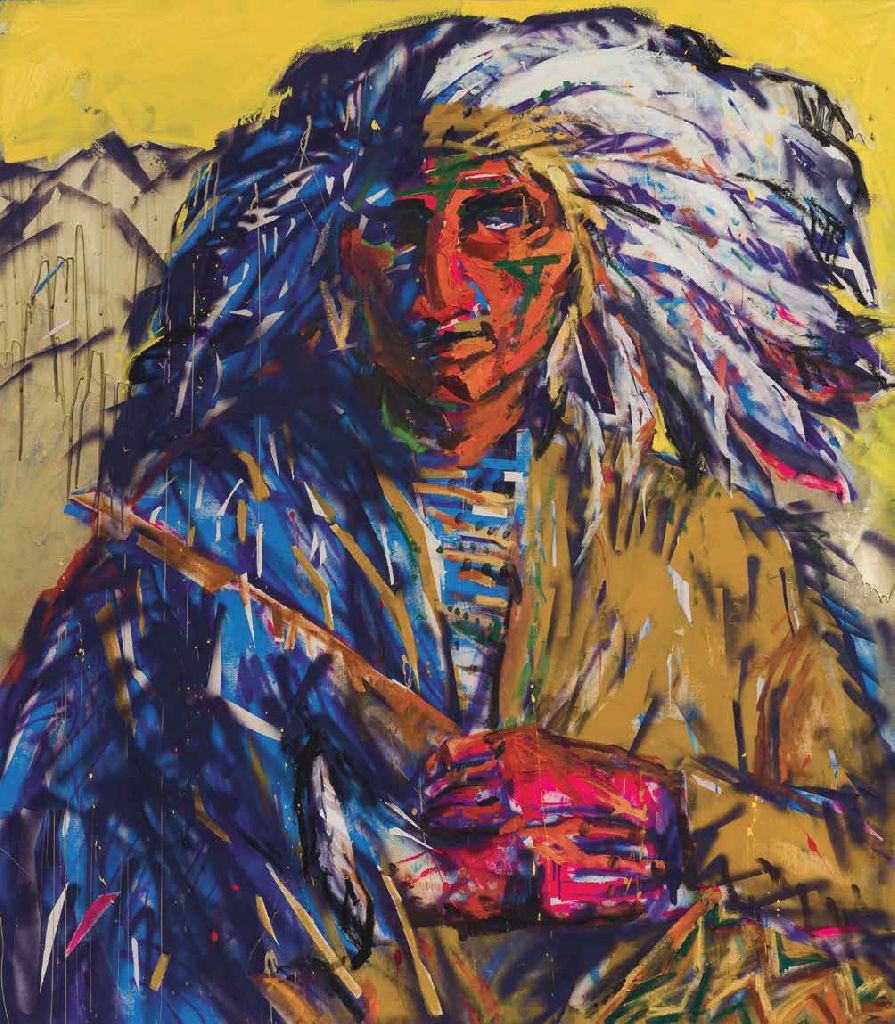 Indian’s Gold. 2019, acrylic and oil colors on raw canvas, 191x167 cm
Indian’s Gold. 2019, acrylic and oil colors on raw canvas, 191x167 cm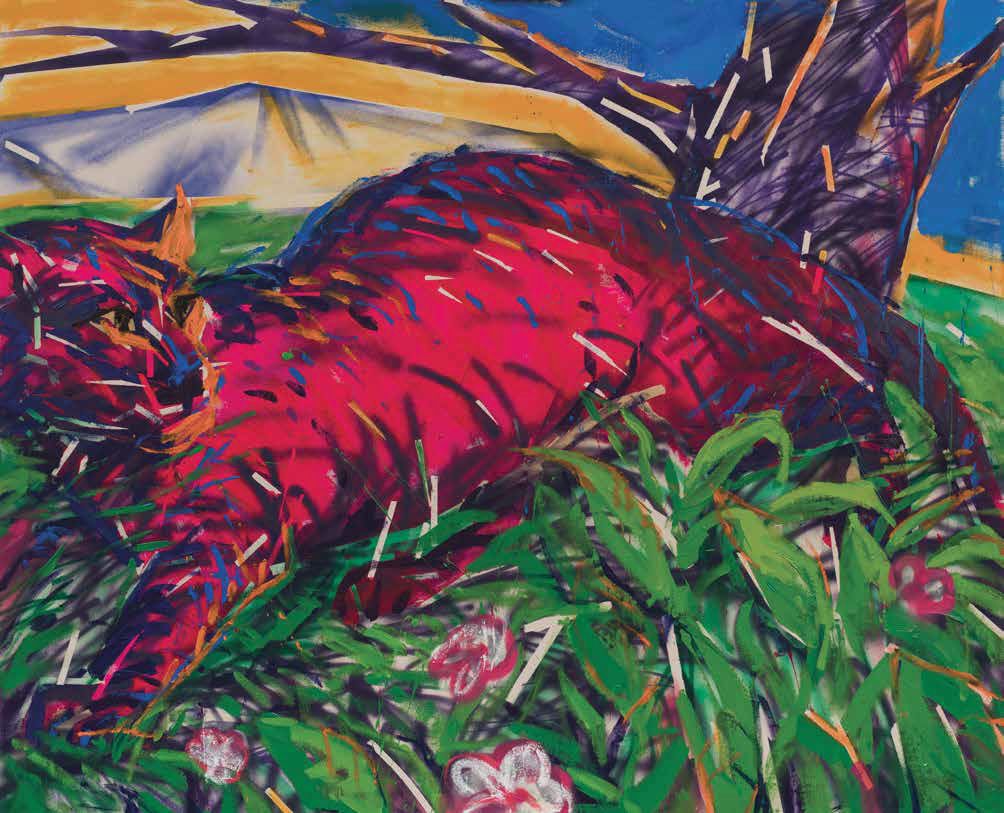 Pink Puma. 2019, acrylic and oil colors on raw canvas, 150x185 cm
Pink Puma. 2019, acrylic and oil colors on raw canvas, 150x185 cm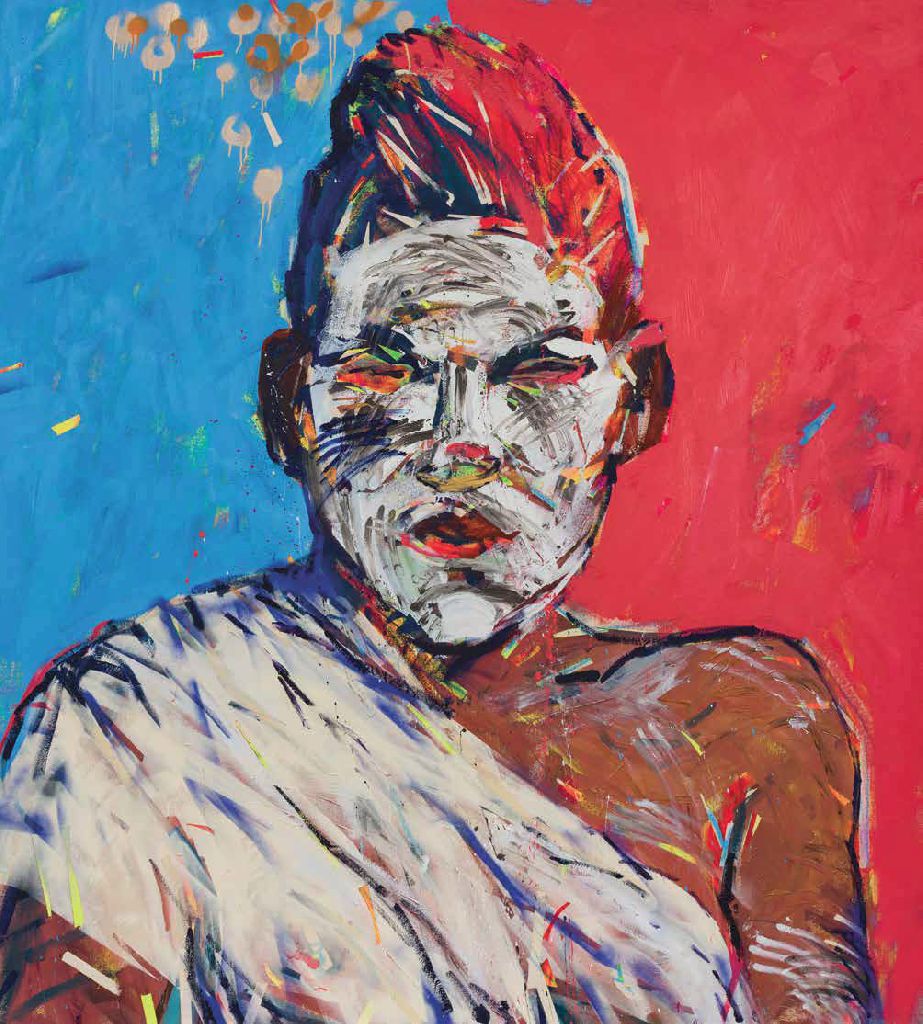 Mask. 2019, acrylic and oil colors on raw canvas, 185x167 cm
Mask. 2019, acrylic and oil colors on raw canvas, 185x167 cmEvgeny Merman’s exhibition includes large-scale paintings, all inspired by an illustrated geographical atlas, which was published in several editions at the end of the nineteenth and early twentieth centuries in Leipzig, Germany. Along with landscapes and buildings? places?, the illustrations depict the inhabitants of countries, islands, deserts and mountains in different parts of the world, detailing the structure of the body, skull and facial features of different races and nationalities from the perspective of European explorers and illustrators, specifically Germans. Merman’s oil paintings follow the illustrations accompanying the second volume of the atlas dedicated to non-European countries, focusing on certain images that aroused the artist’s curiosity: people from different cultures and nationalities, fauna and flora.
Merman's series of paintings and his interpretation of the original illustrations aroused my curiosity due to the scientific focus on the racial characteristics of the various nationalities described in the book. The book began to be distributed in German academies and libraries during the first and second decades of the twentieth century, when the nationalist movement that gave birth to the Nazi party began to take shape, including the Nazi racial theory. I wondered if the study documented in this series of books attested to the special interest of the German Empire (1871-1918) in the racial division of human beings, or whether it was a "scientific" source of inspiration for Nazi racial theory.
Two of the five volumes of the atlas were devoted to geography and three to zoology. The two ‘geographical’ volumes were obviously written from a Eurocentric worldview that views Europe (and perhaps even just Western Europe) as the centre of the world and as the sole reference point. The series includes fifteen chapters on Europe, as opposed to only four chapters covering the rest of the world. The European volume describes mountains, rivers, cities, urban and rural architecture, and a few animals. The inhabitants of Europe are not described at all. In fact, there are almost no human figures in the entire volume, and when they do appear, they are small, in groups and far away in the background (mine workers, farmers, research delegations, sailors, etc).
Evgeny Merman is a native of Ukraine and an Israeli citizen, therefore he is also 'marginal' to Europe; his choice to use the little monochromatic drawings in the book and to give them a large colorful interpretation is a defiant stance. Israeli art has defined itself from its outset in relation to Europe, and the tension between 'here' and 'there' is a tension that has been present in the work of many Israeli artists. It stems from the geographical and cultural separation of Israel from Europe, and from the economic situation that characterised the Jewish settlement’s struggle for existence in Palestine and later the early years of the State of Israel. In those years (and to a large extent also today) Israeli artists emerged from artistically virgin soil and experienced classical and modern works of art "second hand," through printed reproductions and slides.
Merman, like the first artists and sculptors who arrived in Israel at the beginning of the twentieth century, was born and educated in a place where art and architecture are a natural urban environment. Upon immigrating to Israel he also felt the need to bridge very different places and cultures. But unlike those artists who have tried to deal with the bright Mediterranean light and absorb the imagery of the new place, it is difficult to find in Merman's work local references, such is the case with the present series of paintings, where the reference is to European painting (or illustration). At the same time, the selection of images may not be entirely random and can be related to the biography and geo-political reality of the artist. His practice here is reminiscent of the ‘cover’ practice of popular music, or the re-producing of old movies, through which he appropriates the original illustrations and ‘dresses' them in new, personal and up-to-date attire.
At the same time, a discussion of the power relations between a dominant culture and a controlled culture, as shaped by hundreds of years of colonialism, develops. The discussion is reinforced by the choice of images from this volume of the atlas, which deals, as stated, with what Europeans call ‘the Third World’. Many of the illustrations that were the basis for Merman's paintings deal with hunters and hunted. The men are nobles or generals or hunters; the animals are at the top of the food chain, such as a grizzly bear or puma, or at the bottom of the chain (deer, llamas, birds). Merman's paintings emphasize the dissonance between Western admiration for ‘the noble savage’ and the history of the occupation and exploitation of these ‘savages' and remind us how throughout history and to this day the fear of the stranger and the unknown translates into hatred and violence.
As for Merman's picturesque approach in this body of work, it is worth mentioning that his starting point is a 'colourless' illustration; The colourfulness that characterises the paintings is an invented colour scheme that enjoys absolute freedom of choice. He uses rich, contrasting colours that intensify the experience of the observer. The practice is characterised by seemingly fast and expressive brushstrokes on large canvases. At a close quarters, the painting appears as a dismantled collection of colour spots; only while moving backwards does the painting seem to emerge as a powerful figure or primeval landscape. The sources of inspiration are somewhere between the German Erich Heckel (the Sinhalese of Ceylon, or Mount Chimborazo) and the Dutch Willem de Kooning (fighter from the Fiji Islands, or Indian chief from Dakota). Is Merman a kind of neo-Expressionist? I think not, he is a contemporary virtuoso artist who is well acquainted with the history of art and controls traditional and contemporary painting techniques. He does not impose a personal style on the subjects of his paintings but rather aligns his skills to the subjects he selects.
Evgeny Merman approaches the atlas with the eyes of a painter. He only refers to the drawings and ignores the German text that he cannot read. His painterly approach in this series is less meticulous and less realistic than the illustrator's approach. He chooses the themes and compositions that interest him as a painter, occasionally connecting images from various illustrations to one painting, or only referring to a section from the original illustration. The result is a very colourful series of paintings, characterised by quick and expressive brushstrokes, which give new and updated life to the old world, a world that the great historical and traumatic events of the twentieth century have changed beyond recognition.
EVGENY MERMAN is a multimedia artist (born in Kiev, Ukraine), lives and works in Tel Aviv.
In late 90s after studying at New York’s School of Visual Arts and living in Hong Kong, Evgeny moved back to Israel, where he continues his artistic career.
He had his first solo exhibitions in 1995 at Sarah Conforti Gallery, Tel Aviv and Municipal Gallery in Jerusalem and latest 2018 side special installation “Bunker Berlin/Tel Aviv” and Museum of Contemporary Art in Ticino.
His works has been included in several group shows in Israel and others countries, such a “Station Transformation” project, Tel Hai Museum, MACT / Modern Arte Museum.
Artist works is part of the collection of the Jerusalem Municipality Collection, MACT / Modern Arte Contemporanea Museum, Ticino, Switzerland, Hong Kong Holocaust and Tolerance Museum.
ILAN WIZGAN is an independent curator based in Israel and active also in the international art scene. Before curating the Israeli pavilion in the 2011 Venice Biennial (with Jean de Loisy, director of Palais de Tokyo in Paris), Wizgan occupied several posts in major Israeli art institutions such as the Israel Museum in Jerusalem, the Museum of Israeli Art in Ramat Gan, and the Art Focus Biennial in Jerusalem. He has founded and was the artistic director of the First Biennial of Works on Paper in Jerusalem (2002), has curated thematic exhibitions such as Urban Tales in Tel Aviv, video installations in open spaces (2006), The Cypriot Case at the gallery and artists residence in Herzliya (2005), In the Name of the Place at the Artists’ House in Jerusalem (1998), and has commissioned several exhibitions in the biennials of Venice, Sao Paulo and Istanbul.
